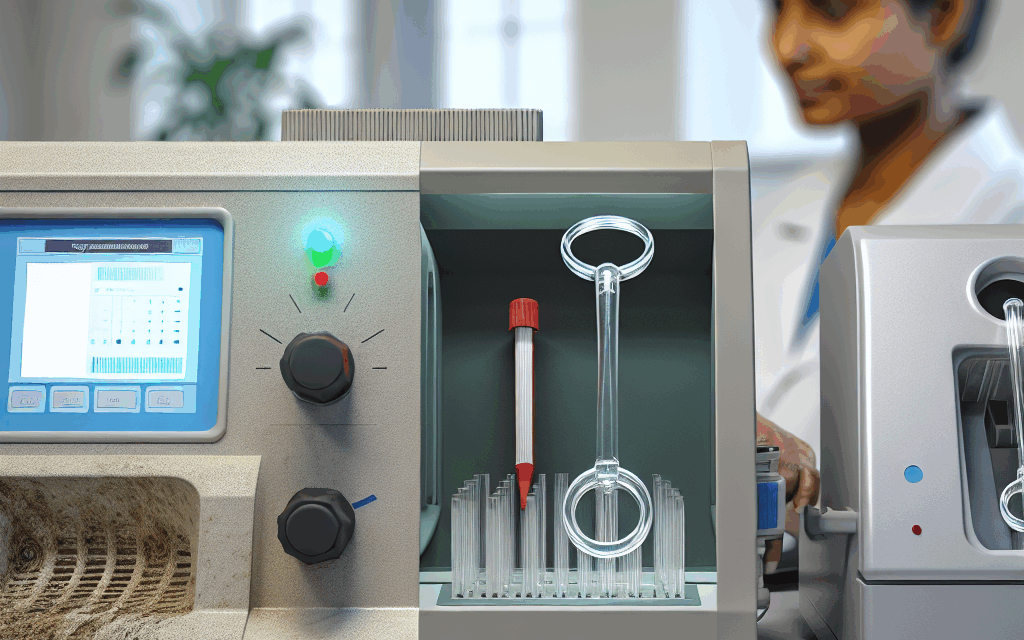Summary
Many clinical laboratories are using outdated urine analyzers, which may affect efficiency and data accuracy. Upgrading to modern systems can improve integration, throughput, and provide features like digital reporting and onboard quality checks. This article outlines signs it may be time for an upgrade and explores new technologies and best practices in automated urinalysis.
Key Takeaways
- Legacy urine analyzers may lack integration and modern features, causing workflow inefficiencies.
- Key indicators for upgrading include frequent maintenance, data errors, and limited connectivity.
- Modern analyzers offer modularity, digital reporting, and enhanced onboard quality controls.
- Considerations should include maintenance requirements and seamless integration with current systems.
- Staying informed about technological advancements can optimize laboratory operations and data accuracy.
Laboratories form the backbone of medical diagnostics, and the precision of urinalysis is critical to patient outcomes. However, the tools used in this vital procedure are not immune to becoming outdated. Many labs continue to operate with legacy urine analyzers that may not suit the demands of modern diagnostic environments. For lab managers and technicians, it’s crucial to evaluate how these analyzers measure up against current needs and features.
Signs Your Urine Analyzer Needs an Upgrade
Recognizing when a urine analyzer is due for an upgrade can save time and resources. Frequent maintenance, inconsistent results, and connectivity issues are common indicators that a system is failing to meet laboratory needs. Legacy machines often lack integration with laboratory information systems (LIS), making data transfer cumbersome and prone to error.
The absence of features like digital reporting and advanced user interfaces can slow down workflow and lead to inefficiencies. Moreover, if technicians are spending more time troubleshooting equipment than performing analyses, it might be time to consider a replacement. Modern analyzers increasingly boast features such as onboard quality control and automated validation processes, which decrease human error and enhance data reliability.
Exploring Modern Urinalysis Technology
Replacing outdated equipment involves understanding the landscape of contemporary urinalysis technology. Modern analyzers offer numerous features aimed at elevating laboratory efficiency and accuracy. For instance, some systems provide modular design options that allow laboratories to customize and scale operations without significant overhauls.
Digital connectivity is another valuable feature that modern systems offer. Advanced analyzers often come equipped with Bluetooth or Wi-Fi capabilities, allowing seamless data integration into LIS and electronic medical records. This ensures faster data transmission, reducing manual entry errors, and facilitating remote monitoring capabilities.
Quality assurance is a paramount concern, and modern urine analyzers often feature automated calibration and onboard quality checks. These features ensure consistent performance and compliance with regulatory standards. According to industry reports, systems offering these capabilities have reduced error rates significantly when compared to their legacy counterparts.
Maintenance is another crucial factor to consider. Modern devices often require less frequent maintenance and offer predictive analytics to foresee potential issues before they arise. Choosing a system with strong manufacturer support and readily available parts can further reduce downtime and associated costs.
Making the Transition: Considerations and Steps
A successful transition involves more than just choosing a new analyzer. Lab managers should evaluate their unique needs and consider the operational impact of new systems. Cost is always a consideration, but investing in the right technology has long-term benefits well beyond the initial expenditure. Training staff on new systems is integral to maximizing equipment capabilities and maintaining productivity during transition phases.
Engaging with representatives from different manufacturers can provide insights into the latest developments and practical demonstrations of system capabilities. Peer consultations can also offer valuable perspectives—a conversation with fellow lab managers who have recently upgraded can highlight potential pitfalls and success strategies.
Regularly reviewing industry publications and attending conferences can keep laboratory teams updated on the latest regulatory changes and technological advances that influence urinalysis practices. Webinars and online resources from reputable organizations provide continuous learning opportunities that ensure teams remain at the forefront of industry standards.
In conclusion, laboratories aiming for efficient operations and reliable data should periodically evaluate their urine analyzers against modern needs and technological advancements. Upgrading to a new system offers tangible benefits in integration, accuracy, and workflow efficiency, ultimately enhancing the laboratory’s contribution to quality patient care.





